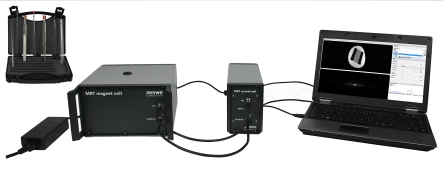
|
|
|||
|
Technical data Relaxation times in nuclear magnetic resonanceArticle no: P5942200

Principle The principles of relaxation processes using the MR technology are demonstrated. Experiments are executed with the MRT training device giving the opportunity to investigate some small probes in the sample chamber. Device control is done with the provided software. Investigations comprise the estimation of the relaxation time T1 which is a measure of time for reestablishing the longitudinal magnetization, the measurement of this latter time and the measurement of the relaxation time T2 which is a measure of time for the decline of the transverse magnetization. T1 and T2 are specific to the sample material and thus give important evidence for the composition of the subject of investigation. Benefits
Tasks
Learning objectives
Scope of delivery
|
|||
|
|
Robert-Bosch-Breite 10 – 37079 Göttingen – Germany
www.phywe.com

